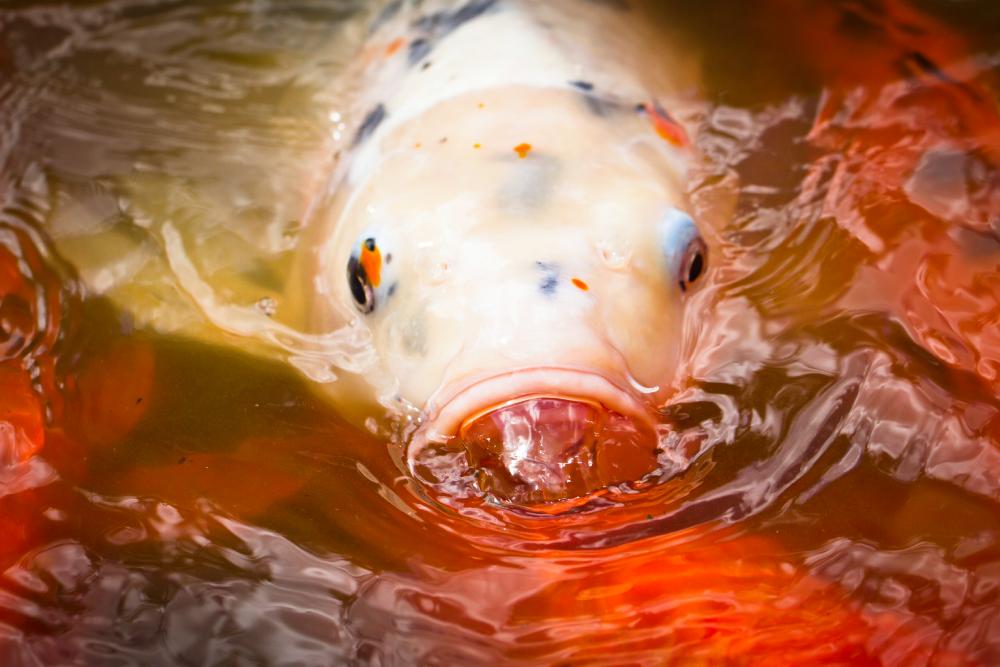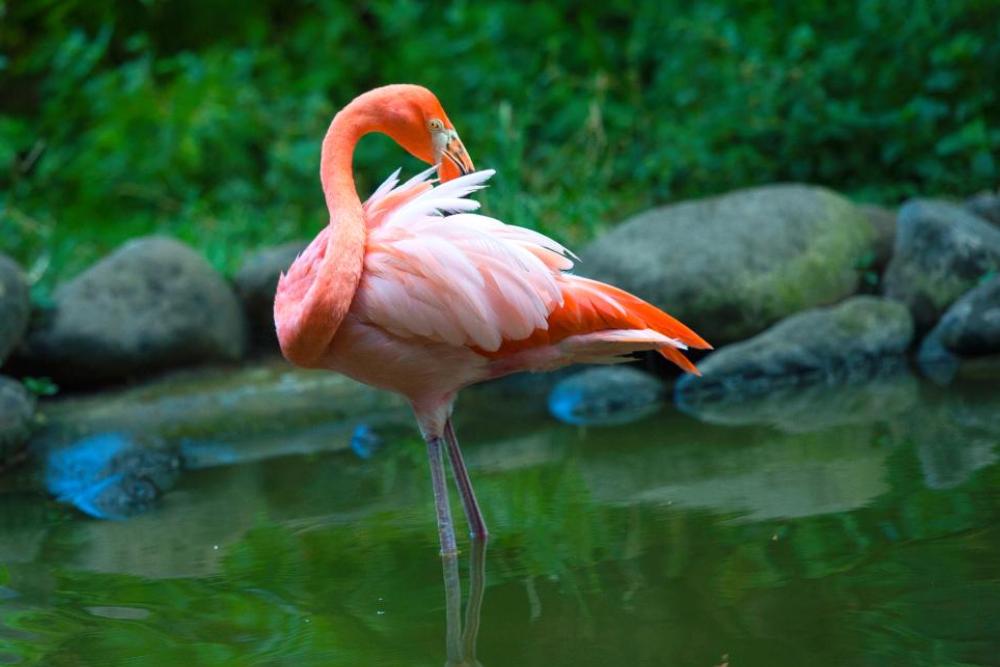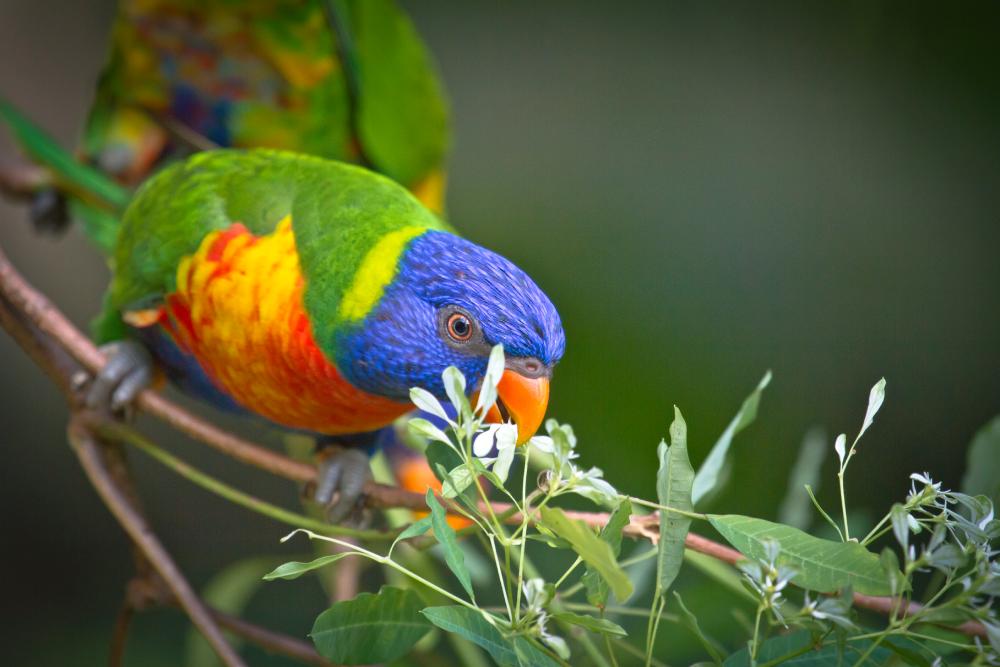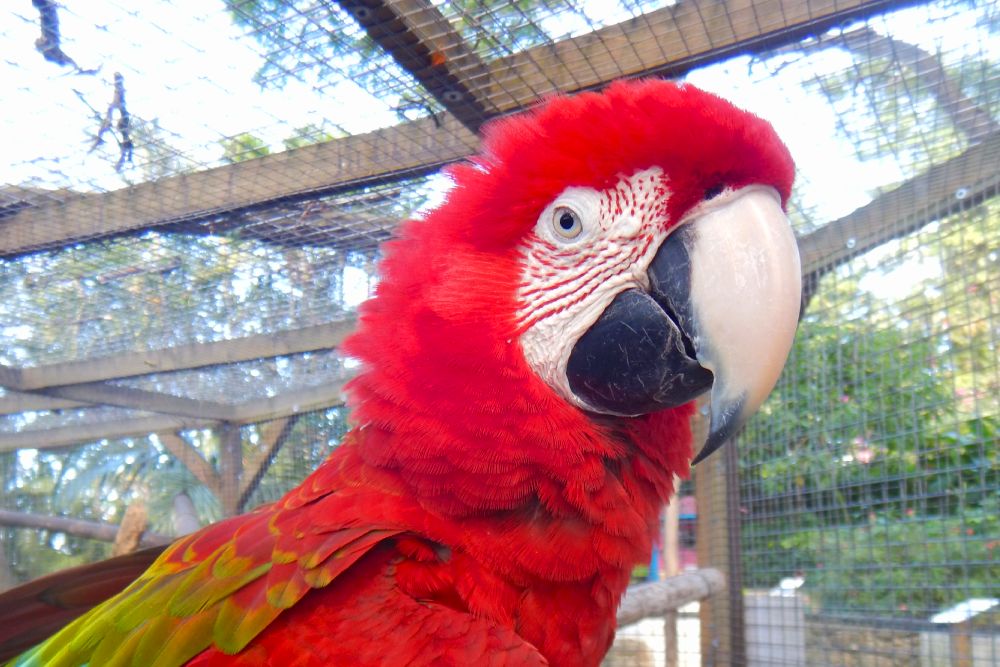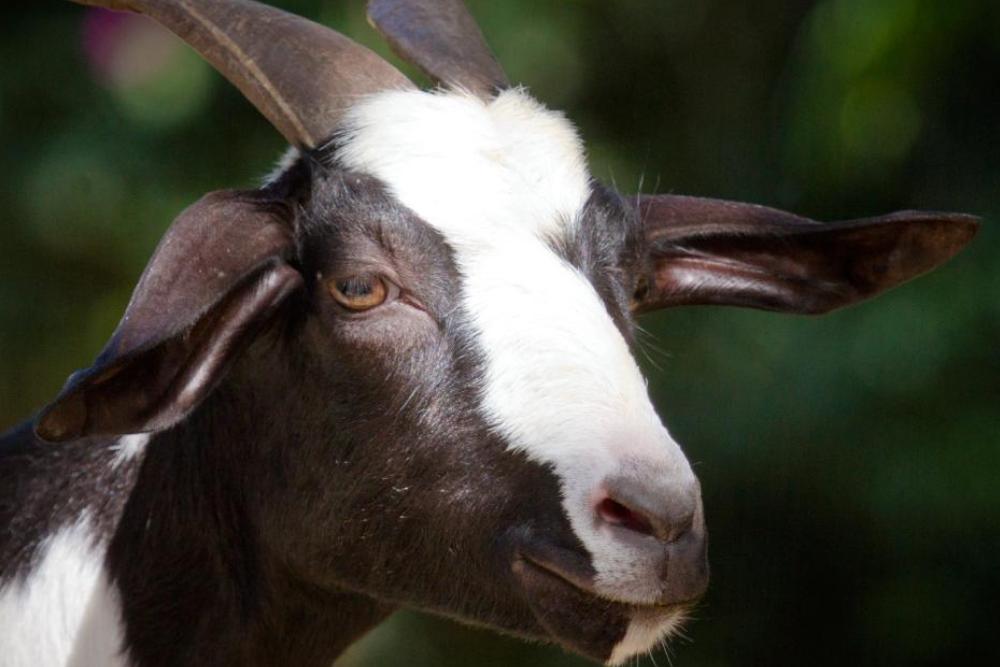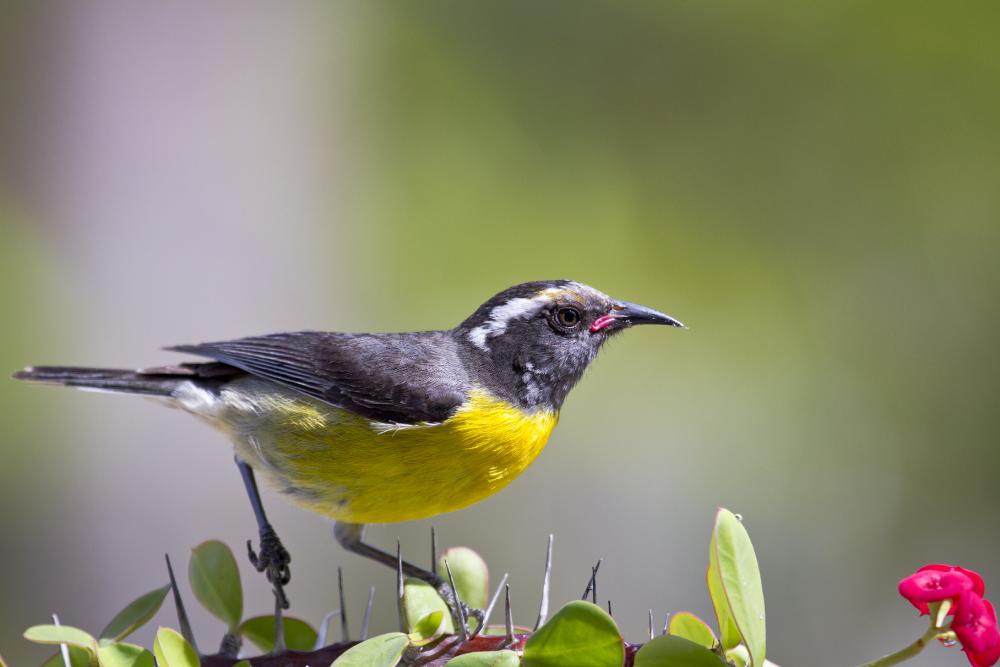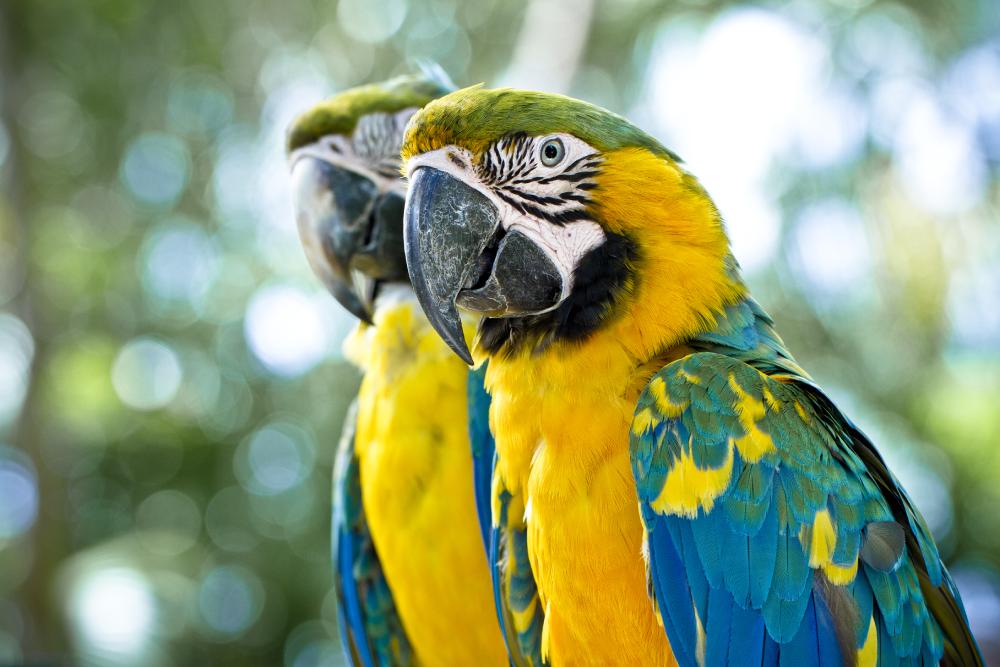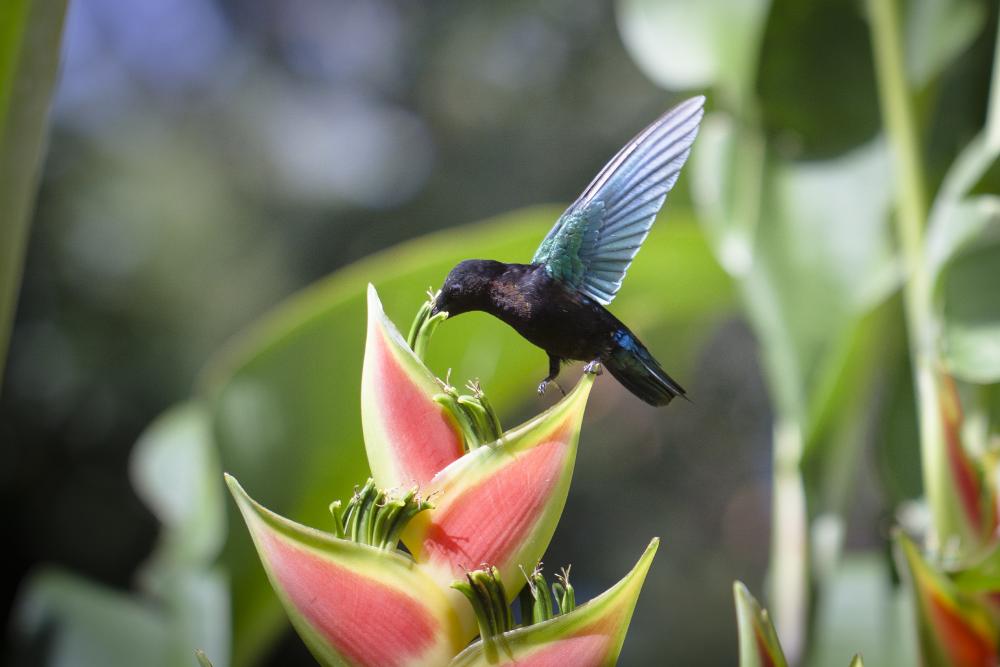
The Fauna of the Garden
KOI CARP (Cyprinus carpio carpio):
Koi carp is an ornamental fish native to Asia. It can reach 1 m long and weigh up to 35 Kg …
Koi carp eat worms, larvae and crustaceans, but their diet is primarily herbivorous.
The higher the water temperature, the more voracious the carp are. Koi are fond of sandy or muddy bottoms where they seek their food. When the water temperature drops below 6°C, the carp practically stop feeding, and enter a phase of semi-hibernation which can last all winter. They then hide at the bottom of the basin almost sunk in the mud to protect themselves from the cold. Carp are renowned for their longevity, usually 18 to 20 years. But some specimens have reached the age of 70 years. The Koi carp lays up to 100,000 eggs per kg of its weight. Thirteen official classifications make it possible to differentiate them. There are about 1500 species or subspecies in the world. Some colorful varieties are highly prized by collectors and fetch huge prices while still only about two years old. In Southeast Asia, koi are considered a symbol of love and virility.
PINK FLAMINGO (Phoenicopterus Roseus and chilensis):
The greater flamingo is a large white bird with a pink shade, with red wing coverts and black flight feathers…
The beak is light flesh pink with a black tip.
The legs are entirely flesh pink. The Chilean flamingo is pinker than the European form of the flamingo. It can be differentiated by its greyish legs with pink joints as well as the greater extent of black on the beak. The pink flamingo practices the filtration of water and mud to feed itself, thanks to a particular beak provided with slats functioning in the manner of whalebone. He catches a species of shrimp called Artemia Salina. The latter is at the origin of the pink color of the flamingo. It also consumes other invertebrates and aquatic plants. A very special adaptation of the spout allows it to evacuate the salt contained in the water passing through it. The flamingo is found in Europe, Asia and Africa. It prefers large areas with shallow brackish water, with nutrient-rich islets and sheltered from humans. The Chilean flamingo is present in the temperate regions of South America, from Ecuador and Peru to Chile and Argentina, passing through eastern Brazil. Small natural populations are also reported in Utah and California. The flamingo easily reaches the age of thirty in the wild. As with most long-lived birds, the breeding of the flamingo is late. Although it reaches sexual maturity at around 3-4 years old, it generally begins to reproduce later, up to about ten years old. There are 6 species of flamingos in the family Phoenicopteriformes.
LORIQUET (Lorinae):
Lorikeets belong to a subfamily close to those of parrots, cockatoos and parakeets.
Many lorikeets have the distinction of being very conspicuous.
Red, green and blue colors predominate but the entire rainbow spectrum can be found. Lorises and lorikeets have a brush-like tongue that allows them to suck nectar from flowers. To replace it, we give them a daily nectar drink. We also distribute fruit to them: apples, oranges, watermelons and in season mangoes, which they love. Every Monday morning, we group them together during the first intake of nectar, in order to count them. Present in Australia, Tasmania, Indonesia, Philippines and New Guinea, the lorikeet lives mainly in the plains. It is found in a wide variety of forest habitats, including dense patches of eucalyptus and melaleuca trees, swampy woodlands, shrub savannahs, grasslands, and occasionally mangroves. In this aviary, we have two species of lorikeets: Swainson's lorikeet and Rosenberg's lorikeet. As you can see, nests are available for lorikeets. Births are observed regularly. We ring the small lorikeets in order to be able to identify them. The Lorinae family includes 43 species of Loris and 13 of Lorikeets. In general, the term lorikeet is used to describe species with a long "conical" tail, while the term lori is used for species with a short, rounded tail. Like many birds, some species of lories and lorikeets are threatened with extinction.
CHLOROPTERA (Ara chloropterus):
The red-and-white macaw has easily identifiable red, green and blue plumage. It measures up to 95 cm and weighs up to 1.5 kg…
Its beak is massive with flesh pink upper mandible and black lower one.
The legs are dark gray and the irises black, edged with flesh. His cries are strident. The chrolopteran macaw is a granivorous and frugivorous bird. It lives in a diurnal way, at low and medium altitudes in the tropical forests, in particular along the rivers. The red-and-white macaw lives in Panama, Colombia, Venezuela, Bolivia, Brazil, southern Mexico, Paraguay and Argentina. It is a gregarious bird generally living in pairs and/or in flocks of 20 to 30 individuals. The Red-winged Macaw nests in the hollows of trees. The female lays eggs which she incubates for about 27 days. The young fledge at three months of age but only become independent between four and six months. These animals form faithful pairs throughout their lives. Why are our red-and-white macaws in an aviary?
When introducing new birds, we must respect a quarantine principle.
This isolation of new arrivals makes it possible:
– to observe their behaviour;
– check their plumage;
– to control their diet, their stools;
– to check their general state of health.
It is an important moment for the bird and the caretaker to share a certain closeness, to get to know each other and to trust each other.
For the Deshaies Botanical Garden, these newcomers need to get used to seeing a large public pass before them.
CABRI (Capra):
The domestic goat is a herbivorous and ruminant mammal, belonging to the Bovidae family…
goat subfamily.
The goat was domesticated from the beginning of the Neolithic era1 (approximately -10,000 years ago), probably first for its milk, then for its wool, its meat, its skin and its leather. Most of the time, goats are domesticated. The goat is a ruminant: it has 4 stomachs. It feeds on all kinds of wild or cultivated plants. These daily needs are of the order of: two kilograms of dry matter (10 kilograms of green) that it will graze or hay made up of legumes (vetch, trefoil, alfalfa, etc.) and grasses (orchardgrass, ray -grass, etc.); about ten liters of water (variable depending on whether the ration consists of green or dry); salt or a salt stone as desired (additional mineral salts). The goat of Guadeloupe is a very popular animal on the island, it is a local species which is used in particular during parties or competitions. It weighs on average 28 kilos for females and 38 kilos for males. It is one of the best goats in the tropics because of its ease of reproduction and the short gestation period of the females.
SUGAR BOWL:
The sugar bowl is a small passerine bird of yellow, black and gray colors. Present in a large part of Central America….
and from the south it is found throughout the South American continent. It inhabits most of the Caribbean islands. They are so called because of their habit of feeding, among other things, on the sweet substance produced by certain plants.
BIRDS FROM THE GARDEN OF SIMPLES AVIARY (Taennipogya guttata, lonchura oryzivora, forpus coelestis, streptopelia senegalensis, chrysolophus pictus):
In the aviary, you can observe 5 species: the zebra finch, the Javan padda, the celestial parakeet, the Senegal mesh dove and the golden pheasant.
The birds in this kiosk aviary were born in captivity. They are protected by the Washington convention. More than 34,000 species are thus considered, according to their degree of conservation and threat. The zebra finch, sometimes simply called mandarin, belongs to the Estrildidae family. It is the most common and familiar member of central Australia. The Javan Padda, also called Oryzivorous Padda, Javan Calfat or Javan Sparrow, is a small species of passerine bird (the Estrildidae family). The Celestial Parakeet has green plumage. Sexual dimorphism is marked by a blue coloring in the male. This color is found at the level of the remiges and the rump and forms a line behind the eyes. The African Collared-Dove occurs in both Africa and Asia.
It is distinguished by a broad bluish-gray band that covers the wing and by the wide collar of dark markings that encloses the front, the sides of the neck and the upper part of the chest. The Golden Faison is a species of the Phasianidae family.
It originated in China and was introduced to Britain. Its life habits in the wild are still poorly known. He prefers to move on the ground than to fly. THE BOTANICAL GARDEN PHEASANT IS BLIND.
BLUE ARA (Ara ararauna):
Recognizable by its blue and golden yellow plumage, the Ara araurana is the most common of the large macaws in Brazil….
The macaw, a great lover of fruit, has also adapted perfectly to eating seeds thanks to its hooked, robust and powerful beak. Macaws are equally capable of delicately peeling a grape, shelling a peanut or cracking a nut. But their beak does not only have a food function: they also use it, like most parrots, to move around. Macaws are gregarious birds, that is to say that they generally live in pairs and/or in flocks of 20 to 30 birds. Blue macaws are mainly present in Central America, south of Panama, north of Paraguay and in Guyana.
HUMMINGBIRD (Eulampis jugularis, eulampis holosericeus, orthoryncus cristatus):
Hummingbirds, or hummingbirds, are capable of extremely…
efficient and fast.
In flight, it is impossible to distinguish their wings which beat several dozen times per second. A hum accompanies its peculiar flight. They are the only birds capable of flying backwards. In the West Indies he is nicknamed Fou-Fou. You never know where it comes from or where it is going. Their awl-shaped beak allows them to visit the calyx of flowers to collect nectar and small insects. Their geographical distribution extends over the South American continent and neighboring islands. The smallest hummingbird, Helen's Hummingbird, measures only 5 cm. The largest, the giant hummingbird, measures 20. In Guadeloupe and Martinique, only 4 species are known, including one endemic to Martinique: the blue-headed hummingbird. The other three species are the Madeira Hummingbird, the Falle Verte Hummingbird, and the Crested Hummingbird.

